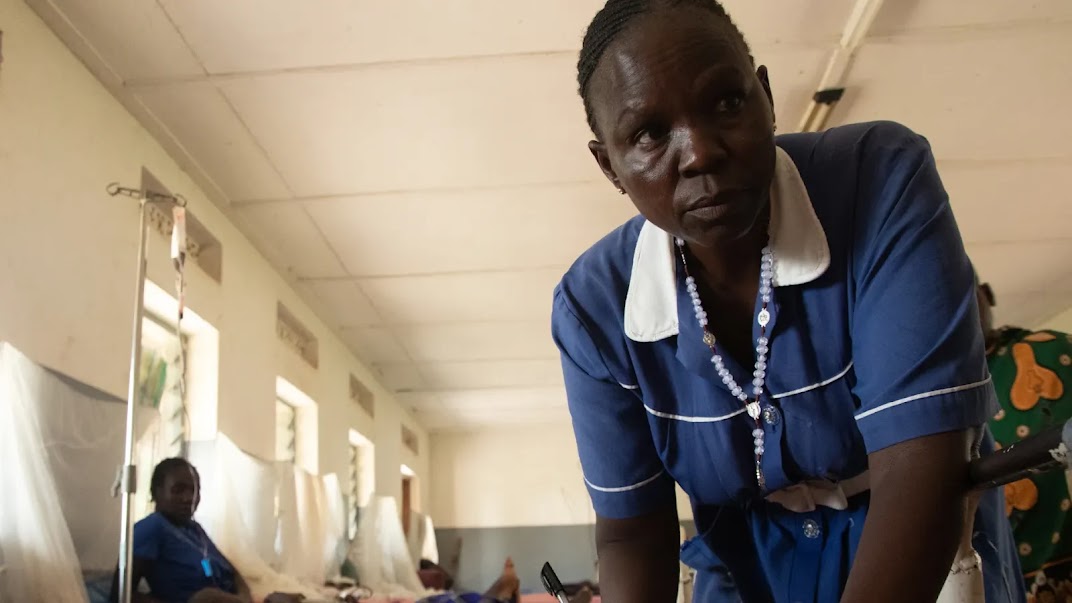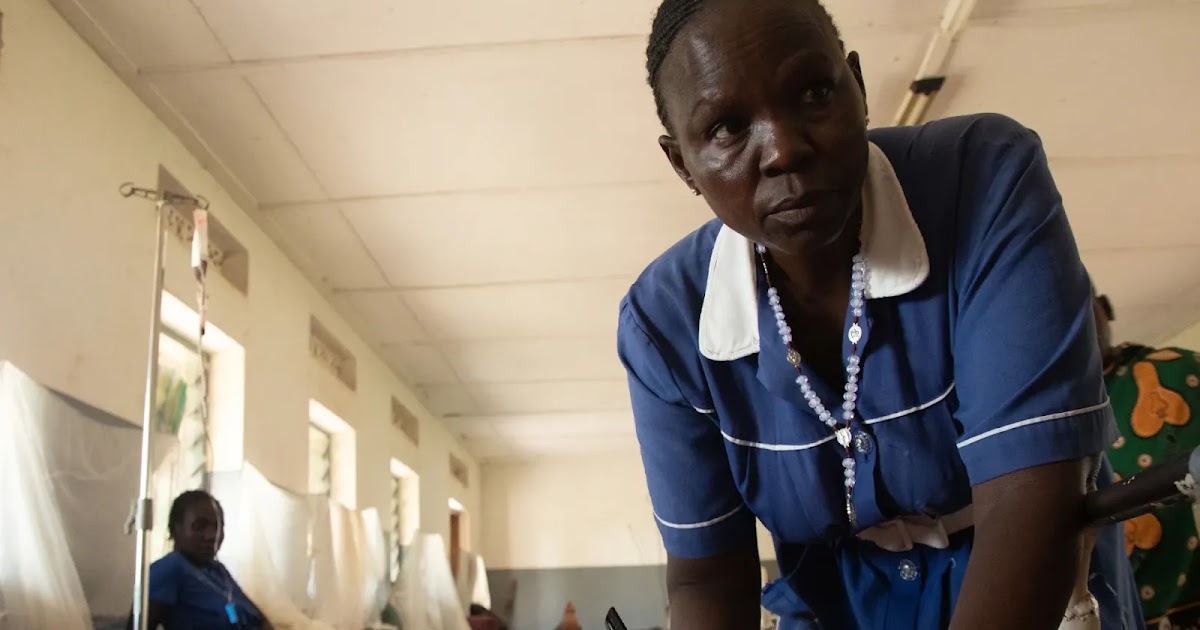Impression

Researchers speed up their search of life-saving remedies for leishmaniasis
“We had been about to surrender,” says Dr Benjamin Perry, a medicinal chemist on the Drugs for Neglected Diseases initiative (DNDi). When Perry joined the group seven years in the past, primarily based in Geneva, Switzerland, his aim was to hurry up the invention of recent remedies for 2 doubtlessly deadly parasitic diseases, Chagas disease and leishmaniasis. By and enormous, they achieved loads of success. For one potential leishmaniasis drug in DNDi’s numerous portfolio, nevertheless, progress had slowed nearly to a halt.
“We couldn’t discover methods of creating adjustments that improved the drug molecule,” says Perry. “It both misplaced all its efficiency as an anti-parasitic or it sort of stayed the identical.”
Nevertheless, issues modified when Perry and his collaborators heard about DeepMind’s AI system, AlphaFold. Now, utilizing a mix of scientific detective work and AI, the researchers have cleared a path in direction of turning the molecule into an actual remedy for a devastating illness.
New remedies for leishmaniasis can’t come quickly sufficient. The illness is brought on by parasites of the genus Leishmania and spreads via sandfly bites in international locations throughout Asia, Africa, the Americas, and the Mediterranean.
Visceral leishmaniasis, probably the most extreme type, causes fever, weight reduction, anemia, and enlargement of the spleen and liver. “If it’s not handled, it’s deadly,” says Dr Gina Muthoni Ouattara, senior medical supervisor at DNDi in Nairobi, Kenya. Cutaneous leishmaniasis, the commonest type, causes pores and skin lesions and leaves lasting scars.
A affected person with visceral leishmaniasis and an HIV co-infection. Credit score: College of Gondar
Globally, about a billion people are at risk of leishmaniasis and every year there are 50-90,000 new cases of visceral leishmaniasis, the bulk in youngsters. Whereas medical remedies range by area, most are prolonged and include vital unwanted effects.
In Japanese Africa, the first-line remedy for visceral leishmaniasis entails a 17-day course of two injections every day, of two separate medication, sodium stibogluconate and paromomycin, given in hospital. “Even for an grownup, these injections are very painful, so you’ll be able to think about having to provide these two injections to a toddler on daily basis for 17 days,” says Ouattara. Earlier than DNDi’s essential work to develop a shorter and more practical mixture remedy, this remedy lasted for 30 days.
Another remedy requires an intravenous infusion that must be saved refrigerated and administered underneath sterile circumstances. “Essentially the most limiting factor is that every one of those remedies must be given in hospital,” says Ouattara. That provides to the prices, and means sufferers and their caregivers miss out on revenue, faculty, and time with their household. “It actually impacts communities.”
“
Folks at all times ask themselves, ‘Have we seemed on the AlphaFold construction?’ It’s turn into widespread parlance.
Michael Barrett, biochemist and parasitologist
DNDi’s earlier efforts have already minimize the period of time visceral leishmaniasis sufferers spend in hospital. However the group’s final aim is to give you an oral remedy that may very well be administered at a neighborhood well being facility, and even at dwelling.
That sort of radical enchancment may require totally new medication. When you’re in search of utterly new compounds to show into remedies, the place do you begin?
DNDi’s strategy to drug discovery on this space of analysis may very well be known as “old skool”, says Perry, although he maintains there’s a cause for that – it’s typically one of the best ways to find medication. First, researchers display hundreds of molecules to seek out those who present promise in attacking the disease-causing organism as a complete. Then, they tweak these molecules to attempt to make them more practical. “It’s a bit extra ‘brute drive’,” he says. “We don’t often know the way it’s doing it.”
Benjamin Perry and Gina Muthoni Ouattara. Credit score: DNDi
This trial-and-error strategy is one of the best ways to seek out new remedies for sufferers, says Perry. However the optimisation stage can really feel a bit like stumbling round in the dead of night. “You are going ‘Okay, nicely, I’ve acquired this chemical, simply make some random adjustments to it’ which works generally,” says Perry. However with their promising leishmaniasis molecule, they’d hit a brick wall. “We’d tried that and it hadn’t labored.”
With hope dwindling, DNDi despatched the molecule to Michael Barrett, a professor on the College of Glasgow, UK, who for the final decade has been utilizing a method known as metabolomics to unravel how medication work.
“There are all kinds of chemical processes occurring in our physique the place we chop molecules down into their part constructing blocks after which rebuild them,” says Barrett. “That is the premise of life, actually.” Collectively, these chemical reactions make up our metabolism. Parasites, just like the one which causes leishmaniasis, have a metabolism too.
Metabolic reactions are regulated by organic catalysts often known as enzymes. Many medication work by interfering with these enzymes, so Barrett and his group search for adjustments within the molecules which are made throughout metabolic reactions to determine what a drug is doing.
He put DNDi’s molecule on to a Leishmania parasite. “Certain sufficient, the metabolism modified,” he says. Barrett and his colleagues noticed a giant enhance in a single molecule whose job is to show into phospholipids, a kind of fats molecule that makes up cell membranes. But on the similar time, the variety of phospholipids truly being made was reducing.
Barrett found out that the enzyme that will have turned the primary molecule into phospholipids was the one which was being affected by the drug. Interrupting this response was how the molecule was killing the parasite.
Stella Akiror and John Oseluo taking down particulars after checking on a affected person. Credit score: Lameck Ododo – DNDi
However having hurdled one impediment, Barrett’s group hit one other. They wished to know what their goal enzyme seemed like, however discovering its construction experimentally can be close to unattainable as a result of it was a kind of protein that’s notoriously exhausting to work with within the lab. “It embeds itself within the membrane, and that makes it actually troublesome to fiddle with,” says Barrett.
That would have been the top of the story. However as an alternative Perry put Barrett in contact with researchers at DeepMind who had been engaged on AlphaFold, an AI system that predicts a protein’s 3D construction from its amino acid sequence. The AlphaFold crew took the goal protein’s amino acid sequence and got here again with precisely what Barrett and his colleagues wanted: a prediction for its 3D construction.
Barrett’s group took that construction, and the construction of DNDi’s molecule, and had been in a position to determine how they match collectively – pinning down, nearly not less than, how the drug binds to the protein.
“
Many of the ailments we work with are endemic in international locations the place the [scientific] infrastructure is just not essentially that nice.
Benjamin Perry, medicinal chemist
Since then, DeepMind, in partnership with EMBL’s European Bioinformatics Institute, has made a database of millions of protein structures accessible to researchers. An open supply implementation of the AlphaFold system is also available. “Anyone can now simply take their protein amino acid sequence, plug it into AlphaFold and get a construction out,” says Barrett. “It’s revolutionary.”
“This, for me, is the largest change that AlphaFold has made to the scientific surroundings,” says Perry. “Folks at all times ask themselves, ‘Have we seemed on the AlphaFold construction?’ It’s turn into widespread parlance.”
Accessing protein construction predictions is proving helpful for drug-discovery researchers in some ways.
There are greater than 20 totally different species of the Leishmania parasite that trigger illness in people, however Barrett’s group works with a single species, Leishmania mexicana. Whereas a lot of what they discover interprets to others, it’s not a given – so they should cross-check any findings. “We are able to get the Leishmania donovani model of that focus on gene, we will put that via the AlphaFold algorithm in a short time and see, does the donovani model fold in the identical method because the mexicana model?”
There’s additionally a human model of the goal enzyme Barrett recognized within the Leishmania parasite. Researchers might want to guarantee that solely the parasite’s model of the enzyme comes underneath assault from a brand new drug, to keep away from potential unwanted effects for sufferers – one thing that shall be simpler in the event that they know what the human model seems to be like. “We acquired that construction from AlphaFold as nicely,” says Perry.
After all, AlphaFold can’t precisely fold each attainable protein. And for these it may, the construction alone doesn’t present all the things drug discovery researchers want. The subsequent step-change can be to develop an AI system capable of predict docking – taking the construction, and the drug, and determining the place they match collectively.
Whereas there may be nonetheless an extended technique to go earlier than the molecule Barrett unraveled turns into an actual remedy in opposition to leishmaniasis – if it ever will get there – it has demonstrated that AlphaFold can decrease a barrier relating to investigating new medication. For researchers searching down new remedies for uncared for ailments, the place funding is commonly tight, this might make all of the distinction.
When drug discovery researchers are in the dead of night about tips on how to optimize a promising molecule, shifting past quick-and-easy tweaks means investing much more money and time. When funding is scarce, that’s a more durable promote. “We are able to’t throw kitchen sinks at points in uncared for tropical ailments as a result of the cash’s not there,” says Barrett.
However a device like AlphaFold may very well be accessible to researchers who can’t use costly tools to pin down the chemistry of their compounds. “Many of the ailments we work with are endemic in international locations the place the infrastructure is just not essentially that nice,” says Perry.
If AlphaFold can assist unravel how a molecule acts in opposition to a illness by making seen the construction the drug is concentrating on – because it has performed with DNDi’s potential new leishmaniasis drug – it may additionally illuminate a path for medicinal chemists like Perry to show a dead-end molecule into an actual remedy. “We couldn’t have a look at this fancy method that our molecule interacts with the construction and say, we simply want one other carbon right here, or do away with that nitrogen, transfer this round – that kind of stuff was off-limits for us,” he says. “Besides, now, it is not.”
Source link
#race #remedy #billion #folks #lethal #parasitic #illness









